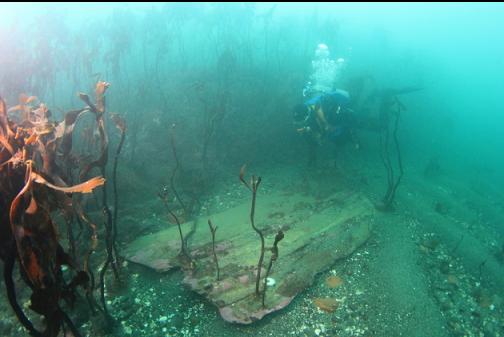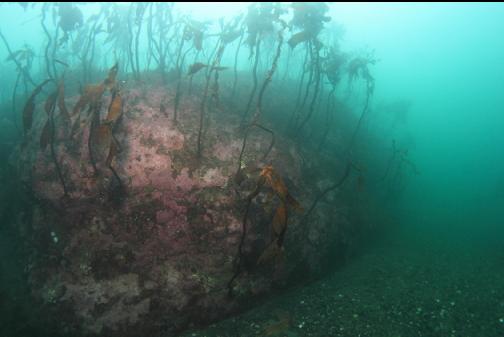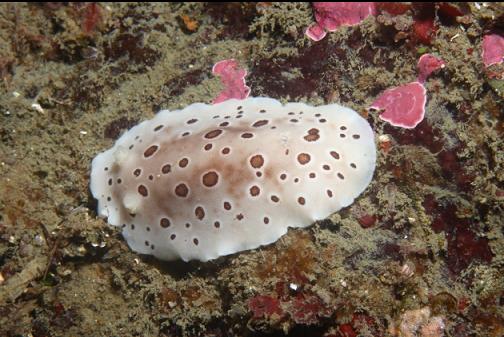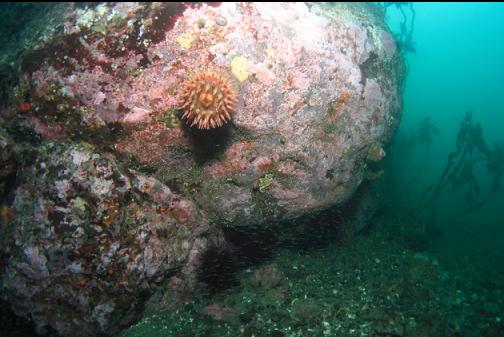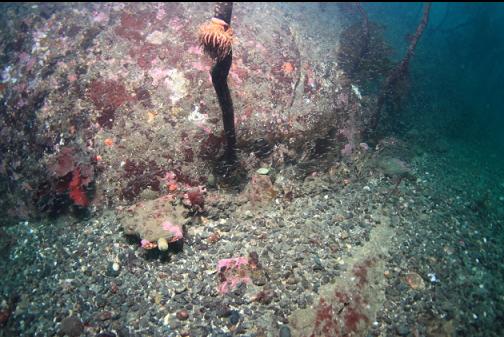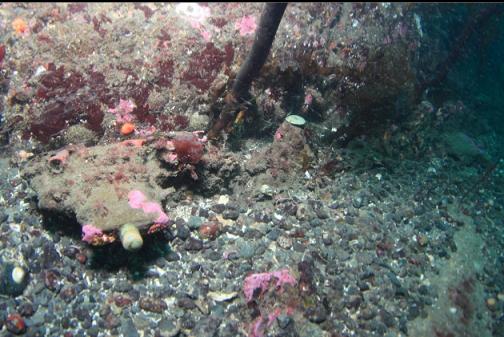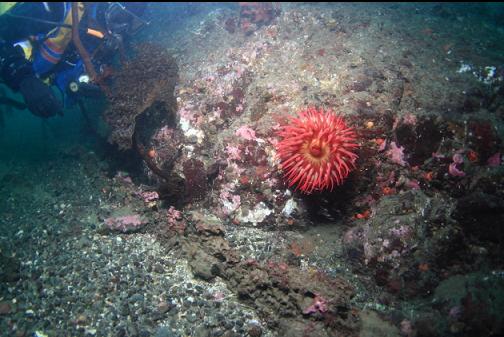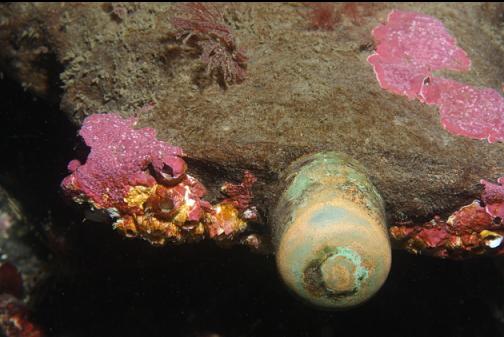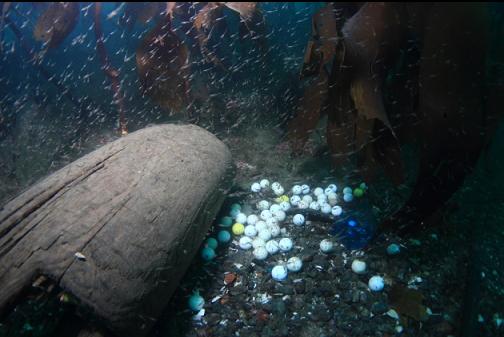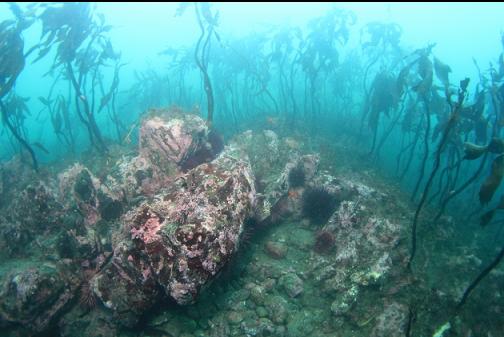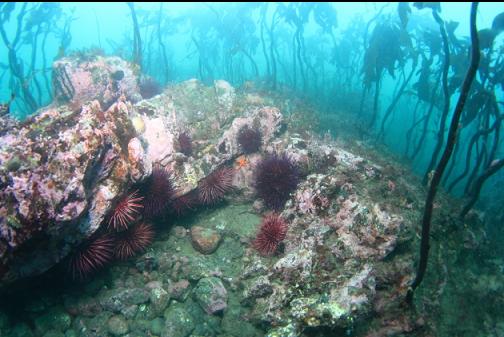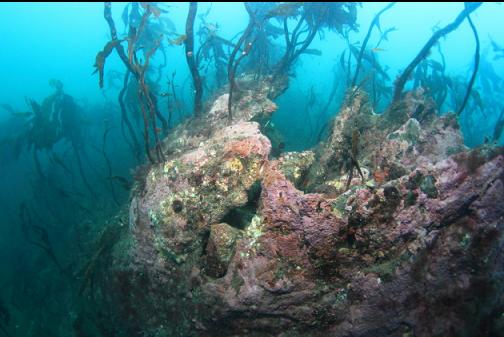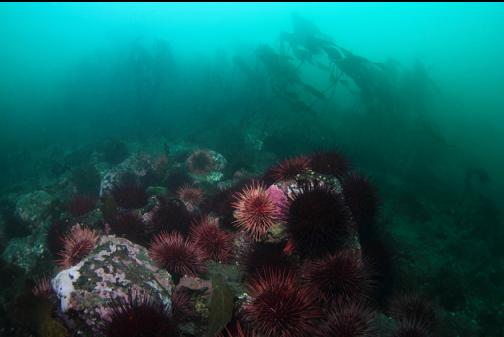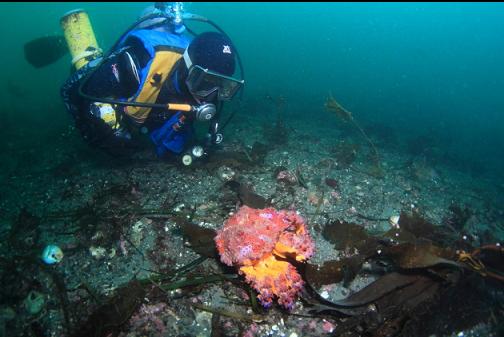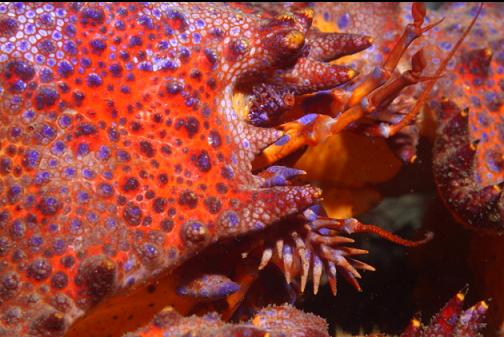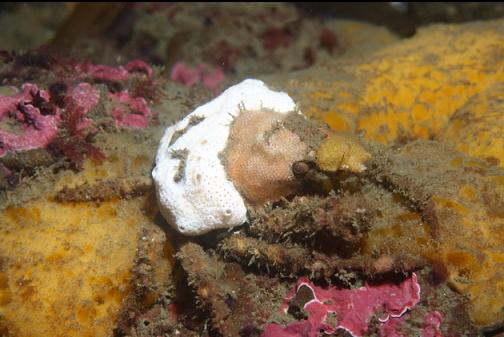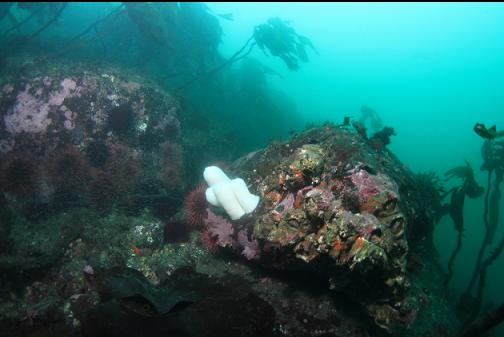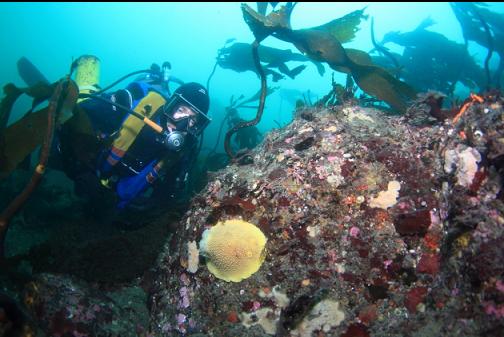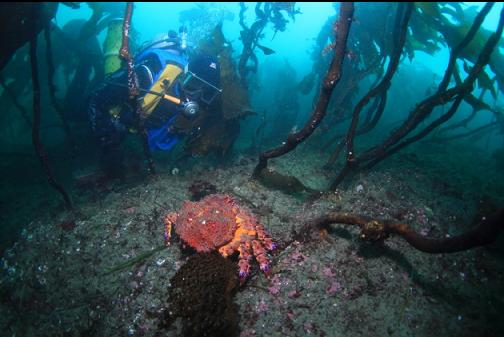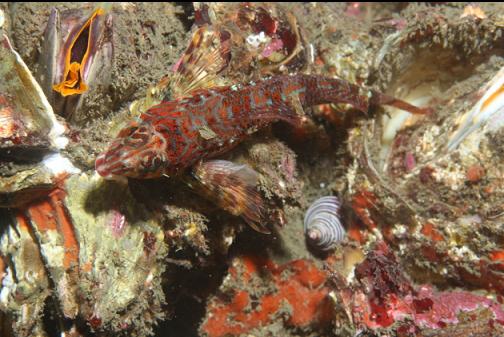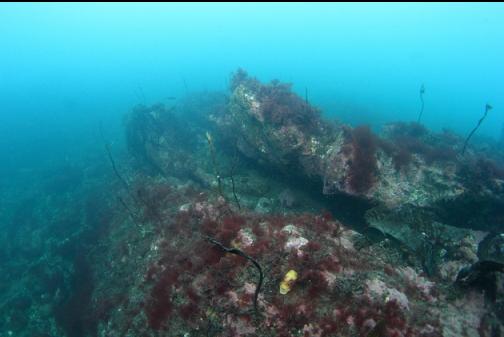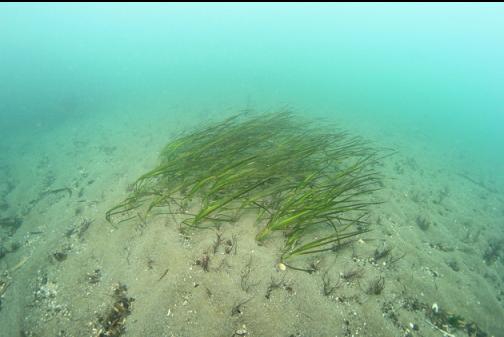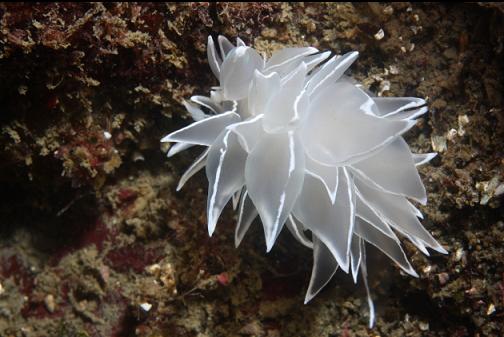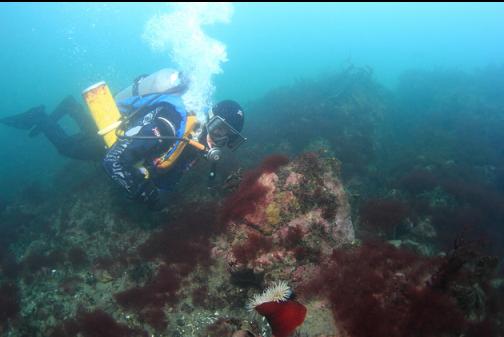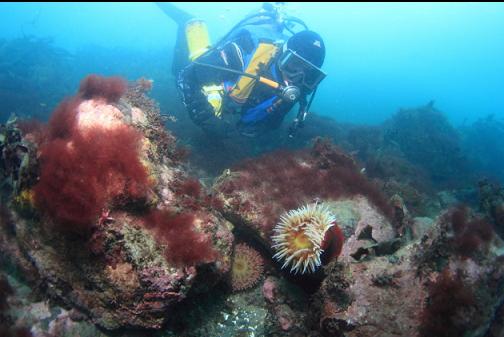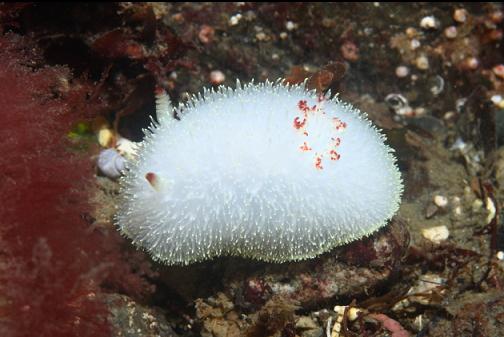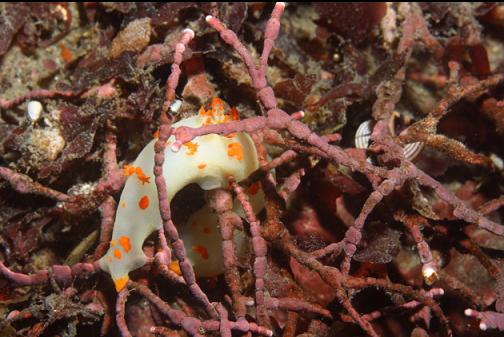This is a collection of shallow rocky reefs just off the Royal Victoria golf course near Gonzales Point. About 150 meters South of these exposed rocks, the chart shows a steep drop to about 40-50' deep. Then there's a relatively narrow gap before the bottom rises steeply again at Mouat Reef. I've wanted to dive this narrow "canyon" for awhile, but the long swim in an area with strong currents made me too nervous to try it. I finally figured I'd try cautiously swimming out. The nearest public access to the shore is at the end of Radcliffe Lane. From there, I walked down the pebble beach and swam along the shore for about 200 meters past small islets and shallow reefs until I reached the main group of reefs pointing out towards Mouat Reef.
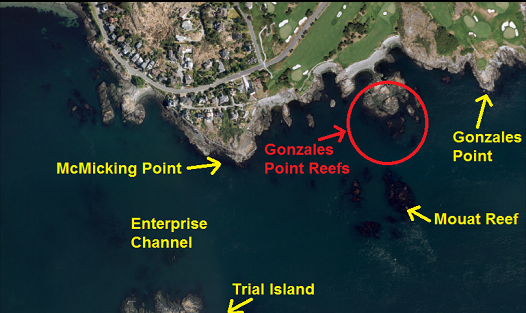
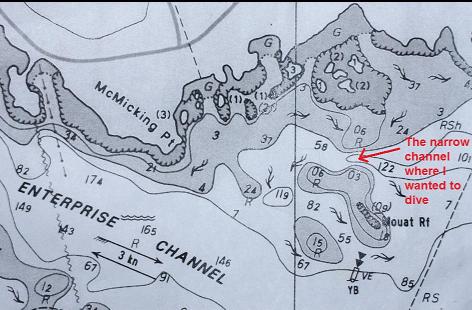
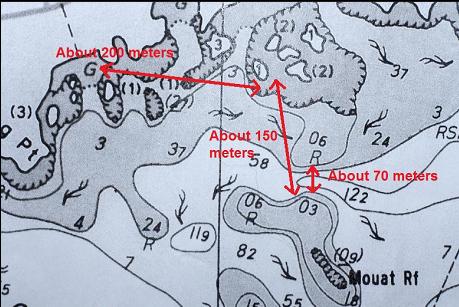
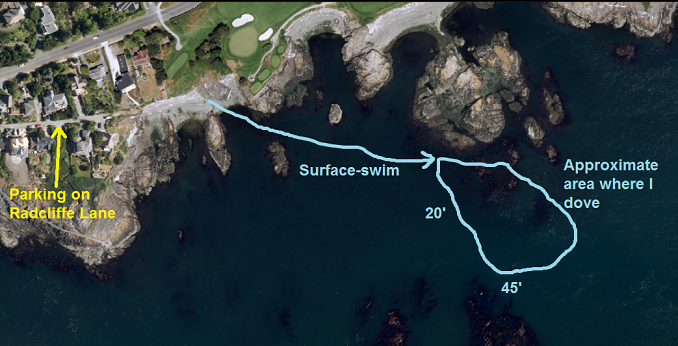
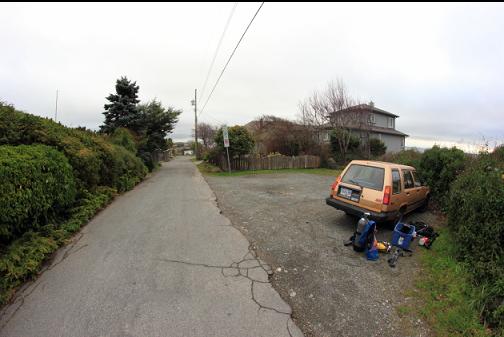
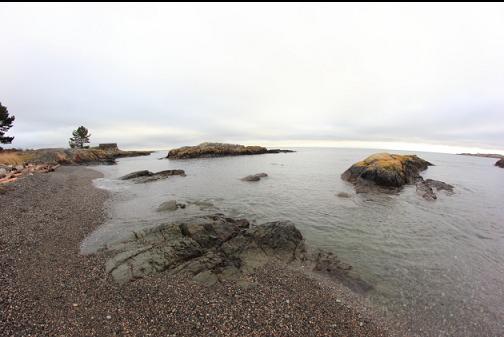
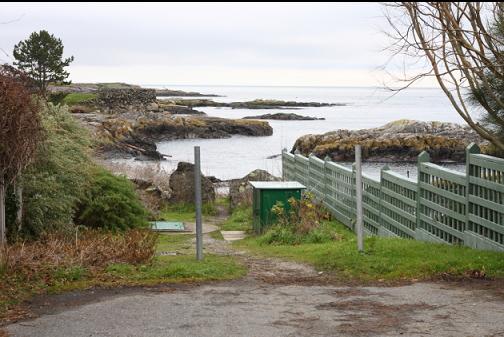
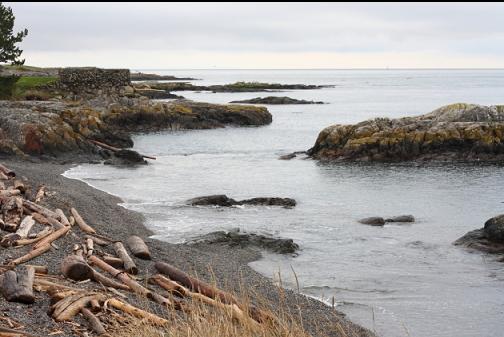
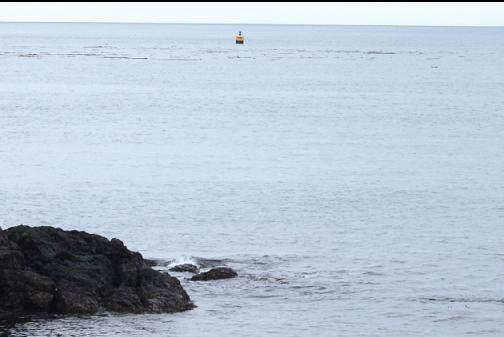

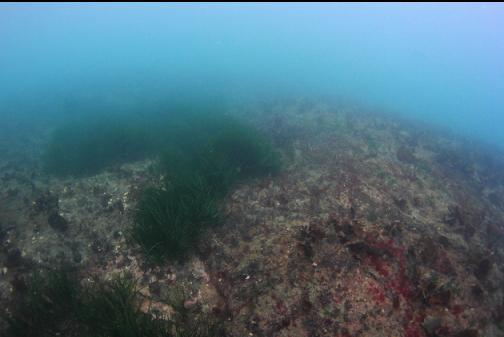
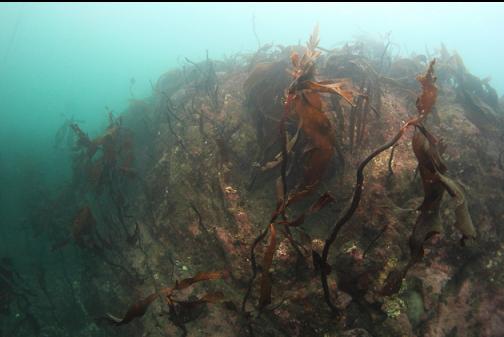
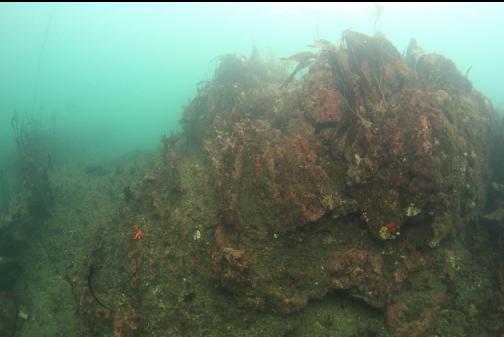
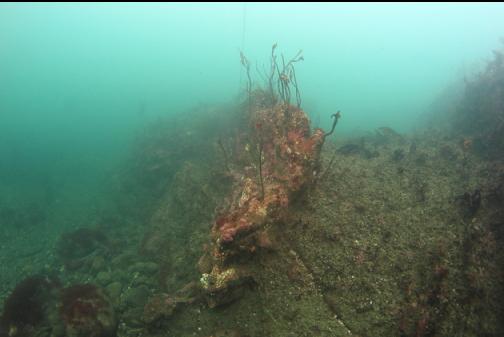
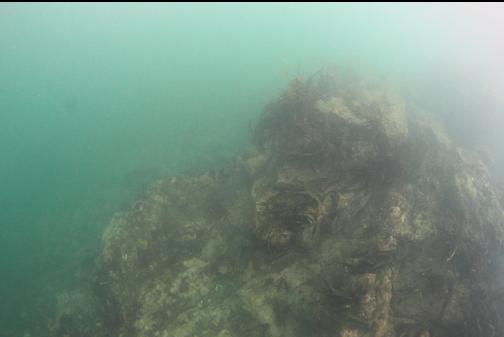
I descended to a maze of rocky reefs going down to about 20 feet deep. The rocks were weathered into strange shapes in a way I've never seen before. I kept thinking that I was looking at jagged pieces of hull from an iron wreck, but it was just the rocks forming thin walls and hollows. These 2-dimentional pictures don't show it very well.
I found an area that was littered with old bricks. They seemed like just regular red-clay building bricks. The area seemed to continue for hundreds of feet. I have no idea how they got out this far from shore.
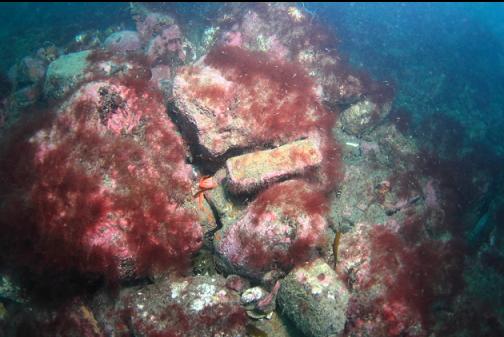
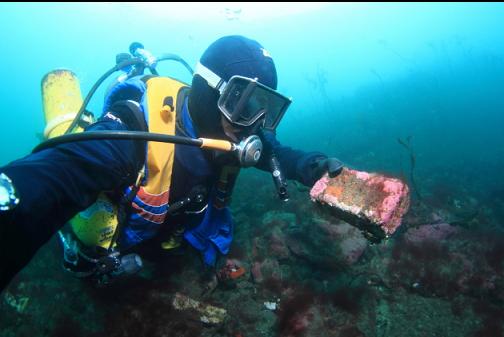
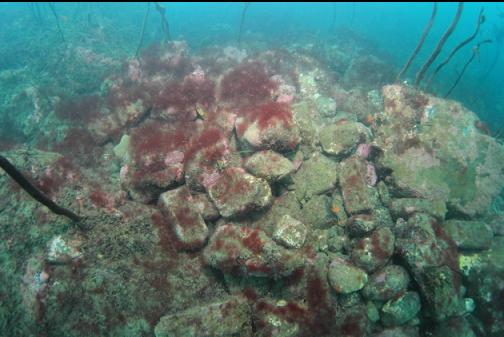
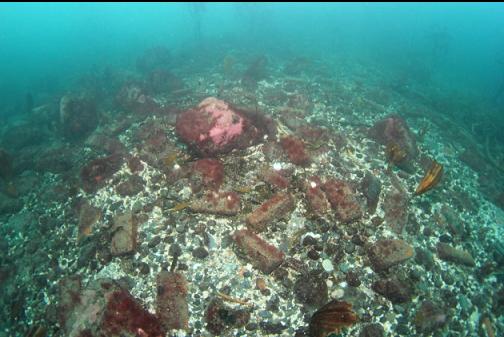
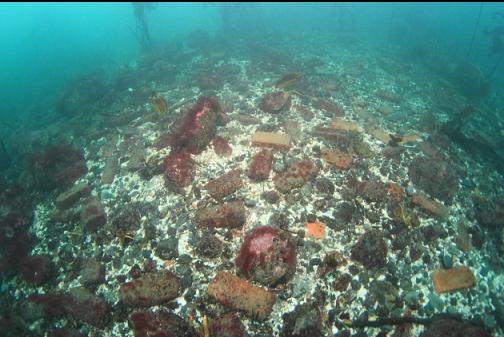
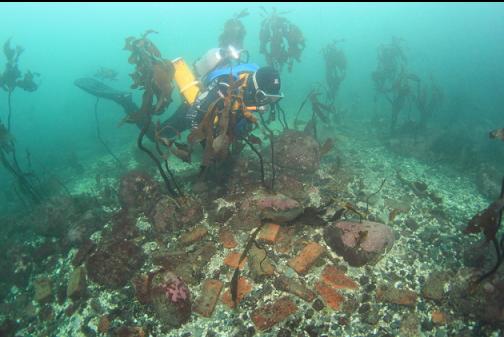
I saw some iron blocks about a foot square and thought there might be a wreck nearby. I was following the brick-area along the base of a steep rocky reef when I saw an engine lying on the sand/pebble bottom about 20 feet deep. It looked like the battered crankcase of a diesel engine (about 5 or 6 feet long). The propeller shaft was still attached, but there was no propeller at the end of it. A fishing net was snagged between the engine and the shaft. Nearby there were more iron blocks (probably ballast), copper bolts, small pipes, and some larger chunks of unrecognisable iron. There were some more bits of copper tubing/bolts scattered around the sand dunes near the engine. I think this is the wreck of the Discovery Isle which was a 50-foot yacht built in China in 1930 for the self-styled "Captain" Beaumont, owner of nearby Discovery Island. He used the yacht as transportation to and from his island and also carried loads of children to the island for holiday day-trips. On Dec. 5, 1950, the Discovery Isle struck these reefs near Gonzales Point and began to sink. Beaumont and the engineer launched a lifeboat, but the heavy seas swamped it and they had to swim for shore. Beaumont made it, barely alive, but the engineer drowned. The locals picked up souvenirs from the wreckage as it washed ashore at the golf course. I had a look on the internet and found that the yacht had a "non-reversing Atlas-Imperial diesel engine". It was hard to tell if this was the same engine I saw on the wreck since it was so damaged and the cylinder housings and valve assemblies were missing. From his hospital bed, Beaumont said he wanted to salvage the valuable engine, but I don't know if he actually did.
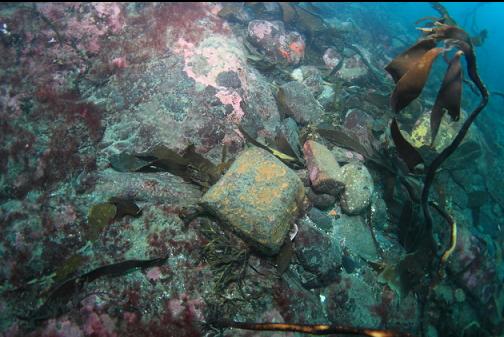
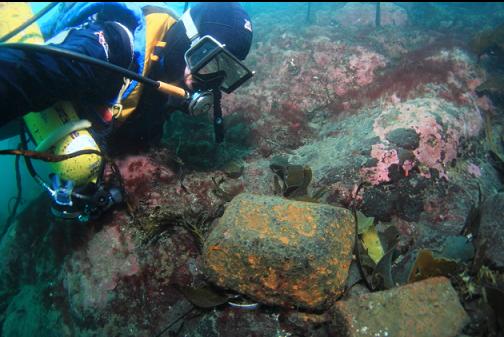
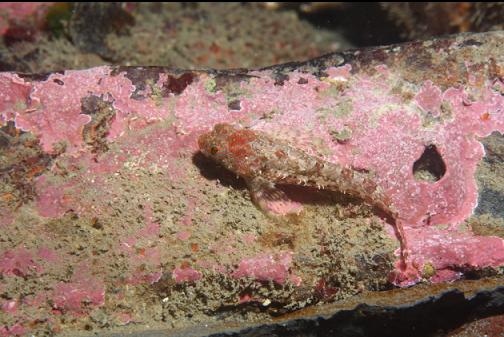
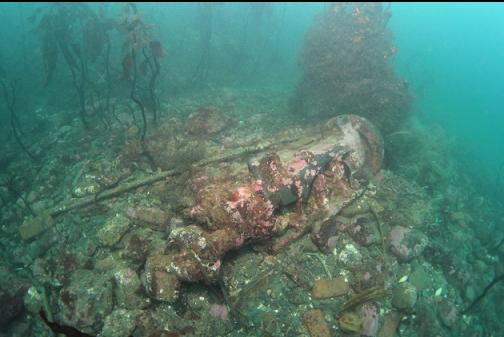
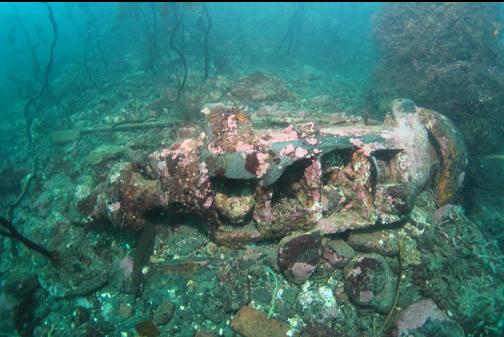
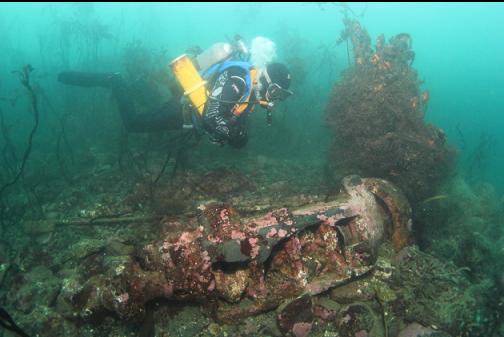
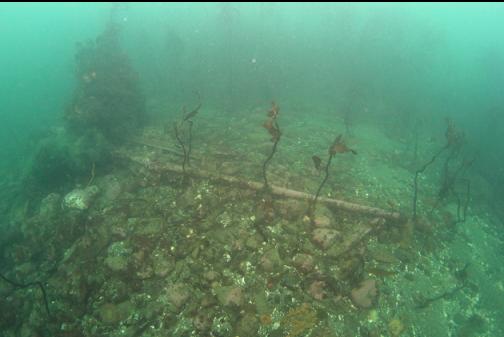
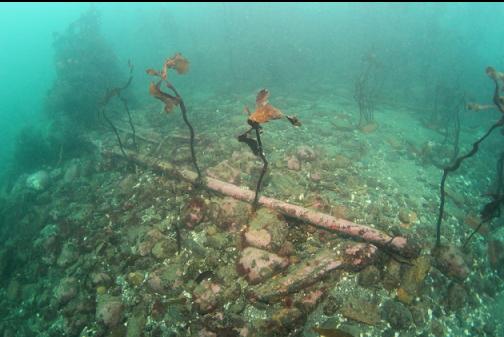
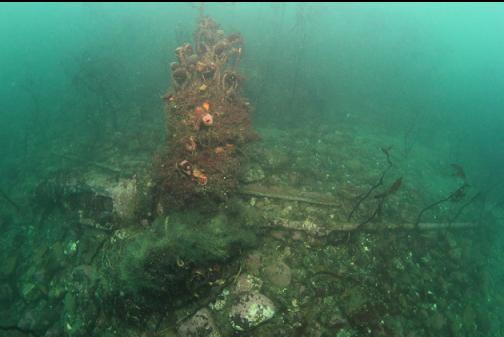
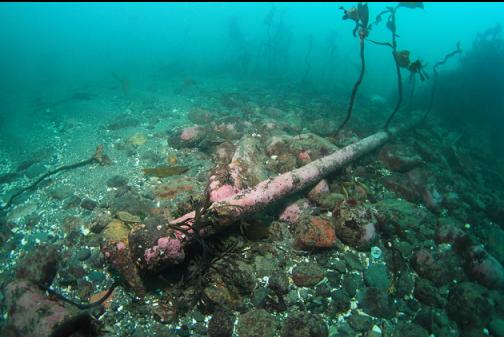
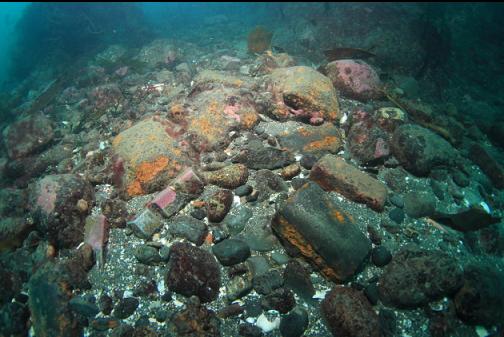
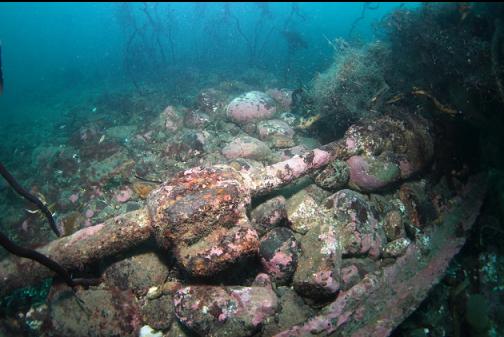
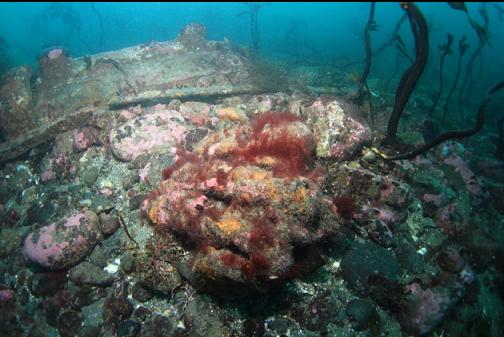
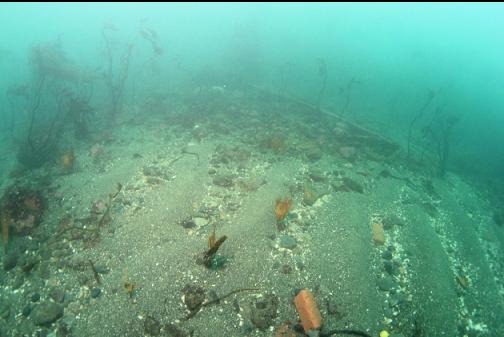
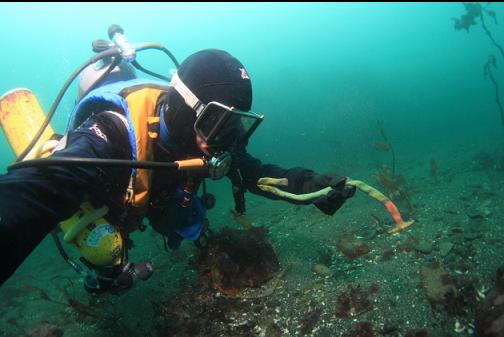
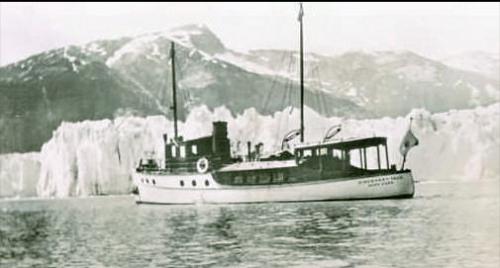
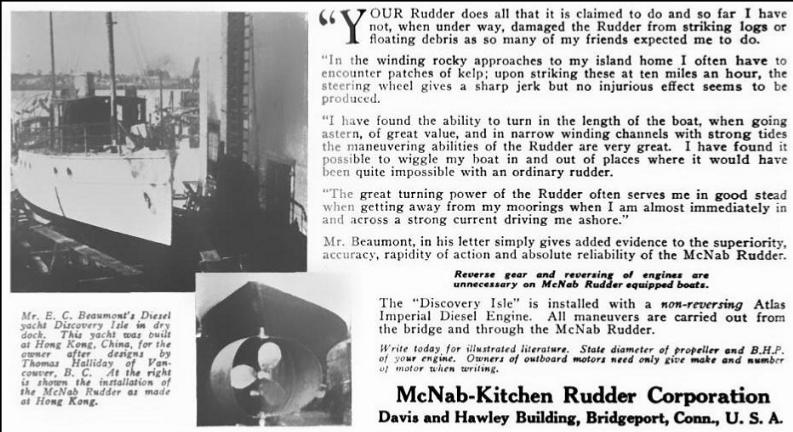
The Discovery Isle photo below is from the B.C. Archives:
I continued to swim along next to the rock reef. I saw a large flat piece of what I assumed was metal, but up close it had a pattern like fiberglass matting. Nearby, there was a mostly-buried rotting length of wood from the wreck with copper bolts sticking out of it.
I continued to swim deeper down the reefs away from shore. At it's deepest point (45' deep), there were some urchins and a couple of plumose anemones, but there wasn't much colourful life compared to nearby Enterprise Channel. I hardly saw any fish either, just 2 or 3 kelp greenlings and the usual tiny sculpins. There was a large Puget Sound king crab off the base of the reef. I tried swimming out over the flat bottom towards Mouat Reef, but the current was starting to increase and common sense took over so I turned around and swam back. There was another Puget Sound king crab under the stalked kelp on the reef.








































